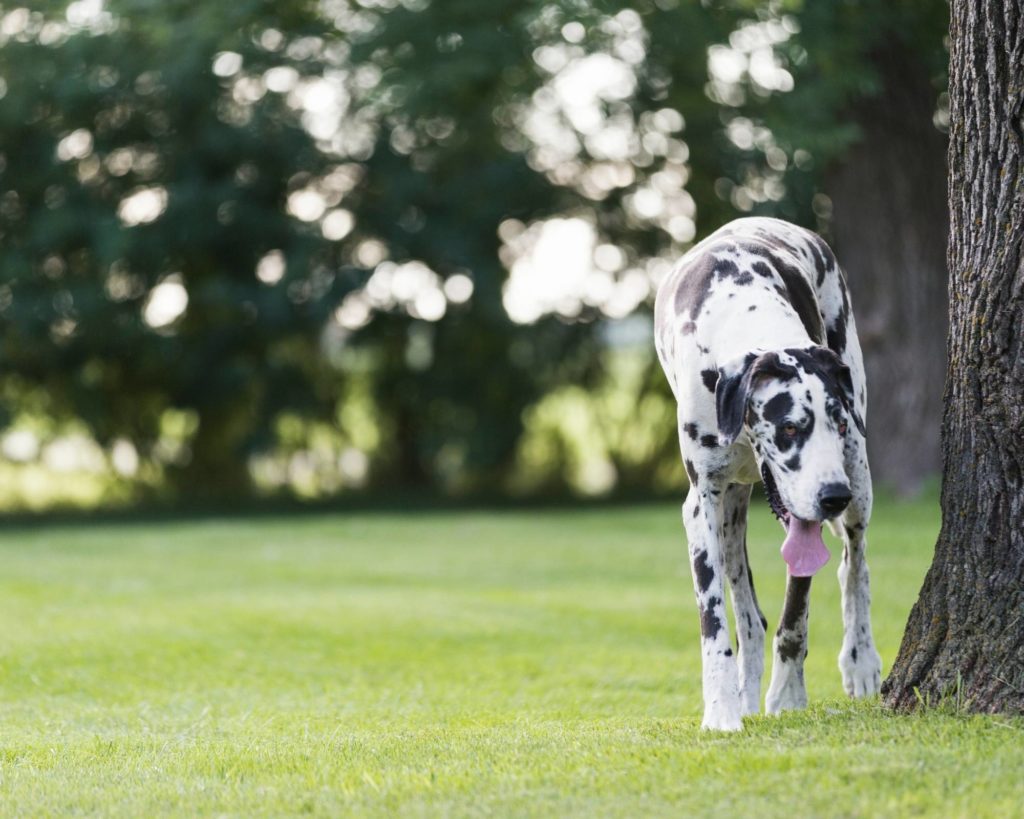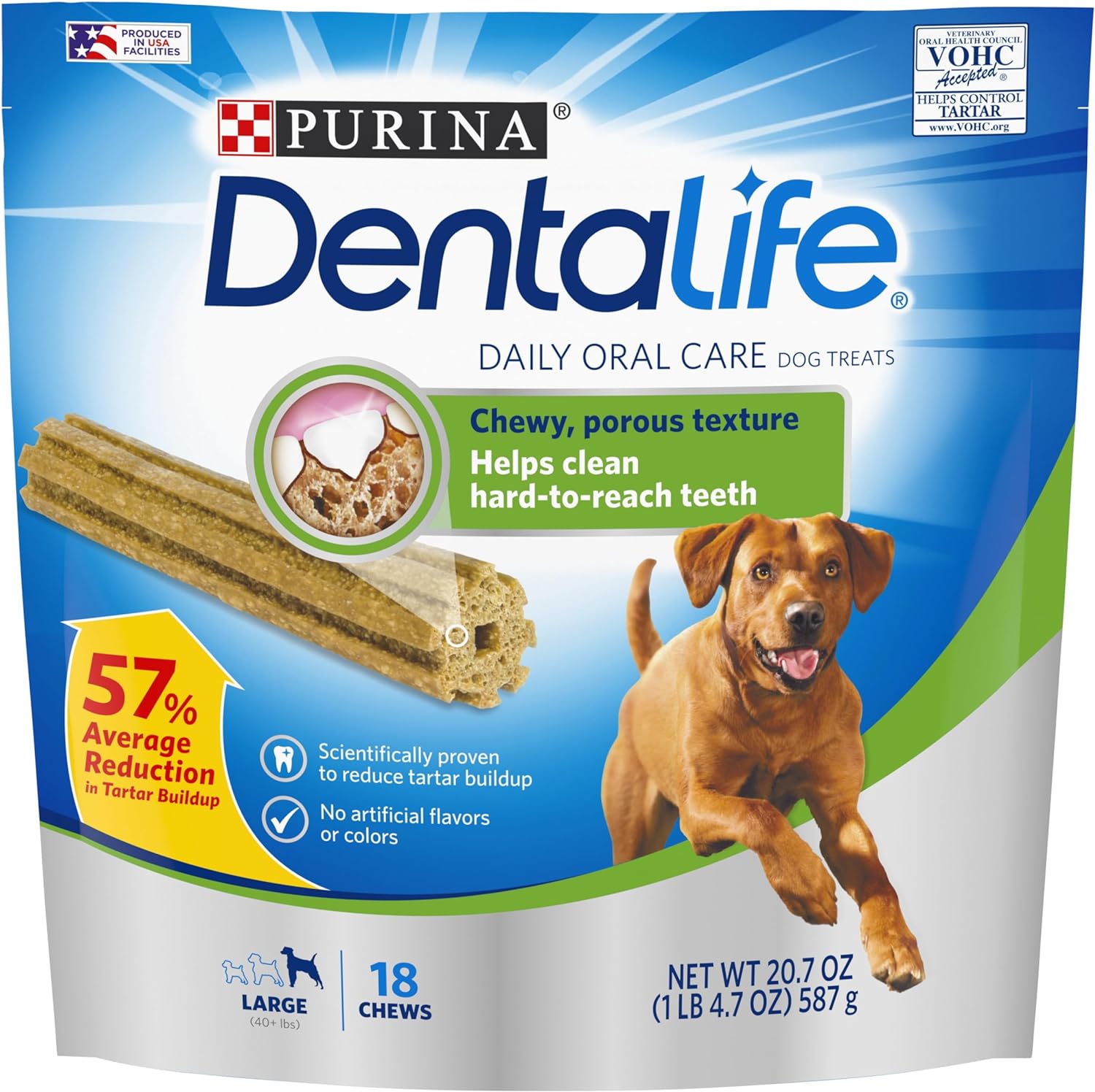You may have seen that the Great Dane community often recommends Victor Dog Food. Is Victor Dog food good for Great Danes? Why is Victor so popular among Dane owners? Can Great Dane puppies eat Victor food?
We’re bringing you the science, stats, and facts today on choosing Victor dog food and yeah, what I have to say about this may be controversial.
If you are looking for the best food to feed your Dane, this post is for you. I’ve done the research for you!
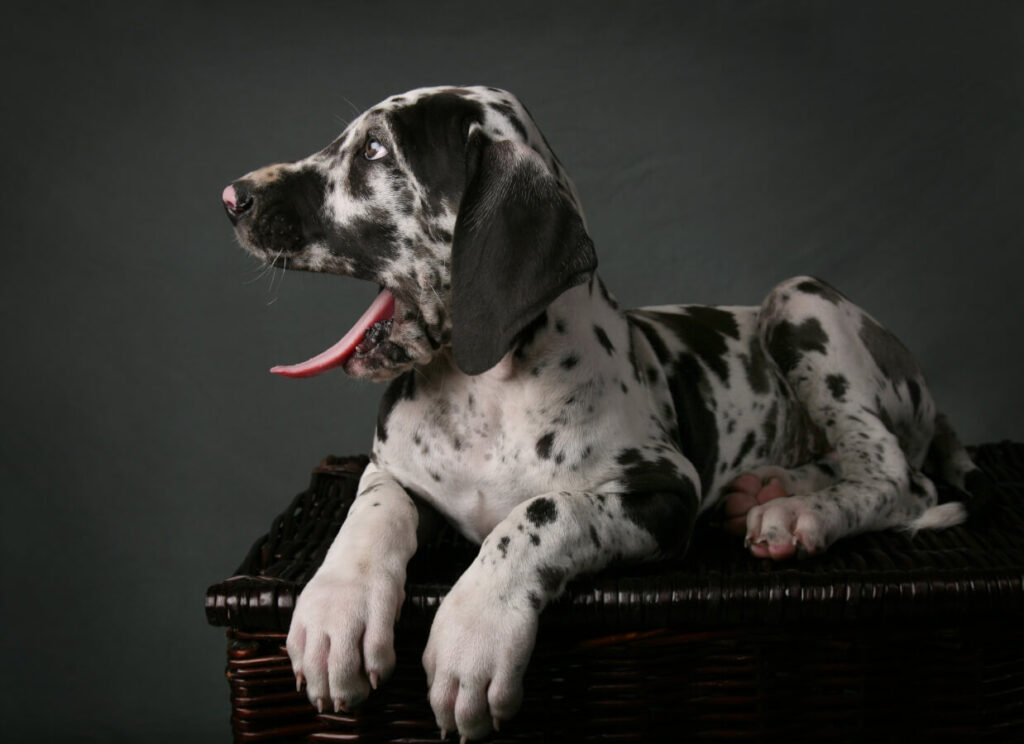
Is Victor Dog Food Good for Great Danes?
I’m going to come out and say this, but please make sure to continue reading into the post because I’m backing my stance up with actual science. Here it is:
Most Victor Formulas are incorrect for Great Danes.
Many popular Victor dog foods have the WRONG balance of calcium to phosphorus, and contain excessively high levels of calcium to begin with.
As a matter of fact, here is a list of things that can be caused by incorrectly balanced food and excessive calcium, especially when fed to Great Dane puppies under the age of 2:
- HOD & Panosteitis
- Retained cartilaginous cores
- Disturbed endochondral ossification
- Delayed skeletal maturation & growth of bone length
- Abnormal bone remodeling
- Skeletal disorders such as incorrect hip or elbow development
- Conformational faults including flat feet (affects dogs of all ages)
- Heart Disease (affects dogs of all ages)
- Poor breeding outcomes (including small litter sizes)
Calcium and skeletal disorders in Great Danes go hand in hand, especially for puppies who are exposed to a high amount of calcium in their diet.
Are you feeding a Victor dog food that is not correctly balanced for your Great Dane?

Calcium, Phosphorus, & Great Dane Puppies
To understand why many Victor dog food that are commonly recommended in the Dane community are incorrect to feed, we have to first understand what appropriate calcium and phosphorus levels are.
Great Dane Puppies should be fed a diet with the following ratios:
- Calcium to phosphorus ratio of 1.2 – 1 or 1:1
- Calcium guaranteed analysis below 1.3%, and ideally around 1.1%
- Balanced vitamin D levels
- Calcium amount below 4.5g per 1000kCAL, and ideally below 3.5g per 1000kCal
Why does this matter?
Because study after study shows that excessive intake of calcium, and calcium that isn’t balanced correctly with phosphorus (and vitamin D), leads to skeletal problems and bone growth disorders.
Too low of calcium is also bad, however, that’s a problem seen primarily in raw and home cooked diets, not in commercially prepared diets that meet AAFCO guidelines.
Dane Puppies will utilize nearly all of the calcium fed to them, and it is believed that adult giant breed dogs in general are less able to deal with excessive minerals (including calcium) as well. Basically put, if a Great Danes’ food has too much or too little calcium, it can be disastrous for their bone health.
To further complicate things, nutrients such as vitamin D play a role in the bioavailability of the calcium and phosphorus provided in the diet, and zinc may as well.
You can read more about calcium & orthopedic growth disorders in large & giant breed dogs HERE.
Many people believe that knuckling is the only growth disorder that Great Dane puppies face. Knuckling is the most obvious, but not the most dangerous.
Knuckling results from other nutritional factors, not necessarily just calcium, as knuckling is related to laxity in the tendons and excess weight on underdeveloped joints.
Just because a puppy doesn’t knuckle and seems to ‘grow fine’ on a particular food, doesn’t mean that food is the best choice.
Many growth disorders related to nutrition or even genetics are not apparent until the dog is slightly older, in pain, becomes lame, or presents with poor bone health and structural problems.
Correct structure and build of the Great Dane is part genetics, part nutrition, and part environmental factors.
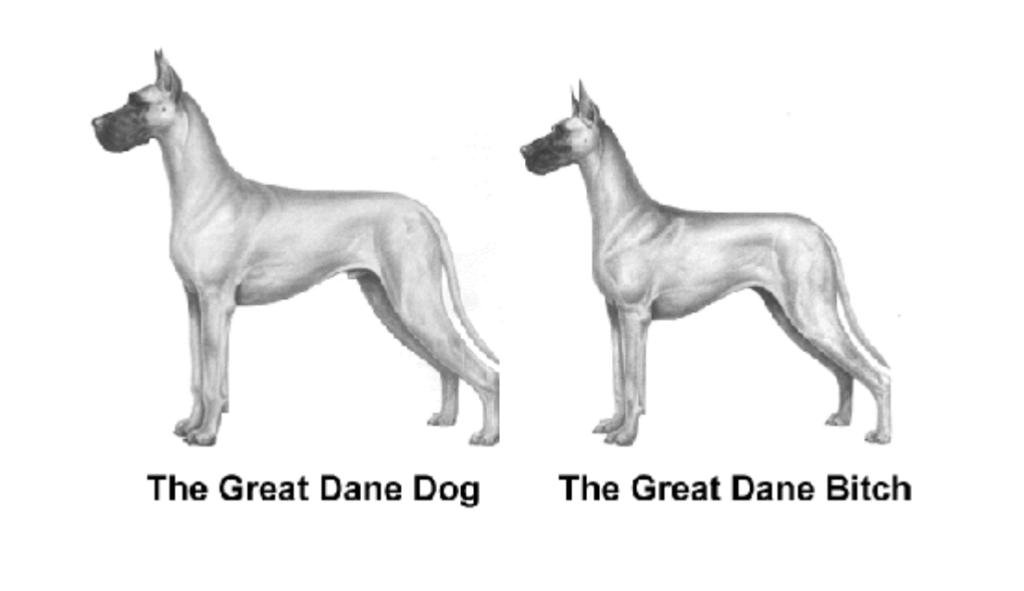
Victor Foods for Great Danes
While we don’t love any Victor formula (we will cover this more below), there are a few popular foods that, based on calcium content and the CA/PH ratio alone we would not feed.
This data below is based on the GENERAL analysis, not the Guaranteed Analysis (which Victor gives us very little data on, unfortunately).
The actual calcium levels may be even higher or lower than listed in the general analysis. It seems that Victor doesn’t do a lot of testing on the actual nutrient levels in their foods, which is also problematic.
When I inquired with Victor via email to clarify their general analysis information, they directed me to their 800 number instead. The fact that I have to run around in circles to obtain relevant nutrition information in writing is a red flag.
| Name | Calcium | CA/PH Ratio | AAFCO Large Breed? |
| Victor Professional (Purple Bag) | 1.76% | 1.3 to 1 | Yes |
| Victor Multi-Pro (Yellow Bag) | 1.71% | 1.4 to 1 | Yes |
| Victor High Energy (Red Bag) | 1.69% | 1.2 to 1 | Yes |
| Victor Hi-Pro Plus (Teal Bag) | 2.39% | 1.5 to 1 | No |
| Victor Beef & Rice | 1.77% | 1.4 to 1 | Yes |
| Victor Chicken Meal & Rice | 1.37 | 1.3 to 1 | Yes |
| Victor Grain Free (ANY type) | Varies | Varies | Varies |
Some of the foods listed above DO have the AAFCO statement indicating that they meet the nutritional levels for large breed growth. Essentially this means that their calcium content is less than 1.8% on a dry matter basis.
In our opinion, 1.8% is MUCH to high for a Great Dane, we like to see 1.2% or less.
All formulas on that list above, regardless of their AAFCO statement, have unbalanced calcium to phosphorus ratios for Great Danes, with one exception (the Victor Hi-Energy red bag), and even that still has a high calcium content (1.67%).
It’s important to note that a Hi-Energy formula is meant to provide extra nutrition (in this formulation, they use a lot of fat). Excess nutrition is ALSO linked to orthopedic growth disorders, so that food is another example of one that should not be fed to Great Danes under the age of 2.
Read more about calcium and phosphorus, and how it affects growth, HERE.
The two most popular foods also have high calcium levels as a whole, which exceed the recommended safe upper limit of 4.5g per 1000kCal.
- Victor Professional at 4.7g per 1000kCal
- Victor Beef & Rice at 5.4g per 1000kCal
Both of those formulas are popular among Dane owners who feed them to puppies, and we’re not sure why. The analysis alone goes against every reasonable guideline on the topic.
There is one food that I found among Victor foods that has a small label on it indicating that it’s for ‘big dogs’. That is the Elite Canine, green bag. It has a calcium to phosphorus ratio of 1.3 to 1 or 1.2 to 1 (depending on the analysis), approximately 3.4g per 1000kCal, and is an “all life stages” formula (essentially, this is puppy food).
Do not go running to get that formula without finishing this blog post, though, as Elite may also be problematic!
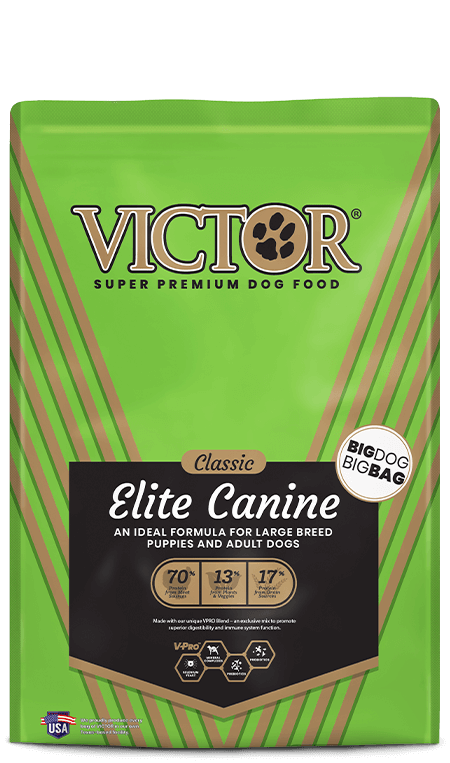
Is Victor Dog Food Good?
We don’t like to food bash around here.
One of my biggest pet peeves in the dog focused social communities are statements such as:
- The food is full of fillers and trash
- Never feed ‘grocery story’ or ‘cheap food’
- I would never feed my dog corn and slaughterhouse waste
- Danes are expensive, you MUST feed a ‘premium’ food
- That’s like feeding your dog McDonald’s!
- Veterinarians have no training and receive kickbacks
- There have been “no recalls” so it must be good
- The FDA said the DCM grain free link was debunked!
Truth time: all of those statements above are based on misinformation and classism. The misinformation that leads to these statements is often dangerous and frustrating, too. (I’ll be covering each in different blog posts).
We have no tolerance for bashing foods that are correctly balanced and at a price point that dog owners can afford. A lot of marketing goes into ‘premium’ pet foods to make us feel like they are healthier or better for our pets, but it’s all marketing.
Of course, you want to choose the best option for your budget, and that is where science and information comes into play. Many people choose Victor because it’s marketed as “Super Premium” and comes at a reasonable price point.
You will notice that we don’t food bash, but we DO point out legitimate factors to consider when choosing nutrition for your pet. We look past marketing and past a lot of the needless, inflammatory, and misguided statements listed above.
See the most recent recall on Victor food here

Should I Feed Victor Dog Food to a Great Dane?
Here are some other legitimate factors to consider when choosing a food like Victor to feed your Great Dane.
Victor Foods does not staff a qualified nutrition professional.
At least one of these people should be on staff for the brand itself:
- Board Certified Veterinary Nutritionist (DACVN/ACVN or aka “Diplomate of the American College of Veterinary Nutrition)
- PhD in Animal Nutrition, ideally companion animal nutrition
To put this simply, the “head chef” at Victor Pet foods has an animal science degree buffered by a simple, inexpensive online certificate in companion animals, from an organization focused primarily on livestock. He does not have even basic nutrition credentials, let alone a veterinary background.
While Victor does collaborate with consultants, they aren’t clear about the scope of that relationship or the qualifications of the consultants.
It’s important to understand that most times, what this really means is that a recipe in written form was signed-off by a 3rd party, or tested in an off-site lab for verification of nutrient content.
Just because a food meets AAFCO minimums, does not mean it was thoughtfully and professionally designed to provide optimum nutrition. For giant breed dogs, this is an important consideration as they have very particular nutritional requirements.
One of the greatest faults of many dog food brands is that they don’t have formulas which were designed and tested specifically to properly support large and giant breed growth.
Of course, some dog foods have the correct ratios, but were they designed for that purpose? Or do they just happen to meet the AAFCO minimum guidelines on paper?
We prefer foods that were developed, by qualified nutritionists, specifically to support the slow, even growth and healthy bone development of large and giant breed puppies.
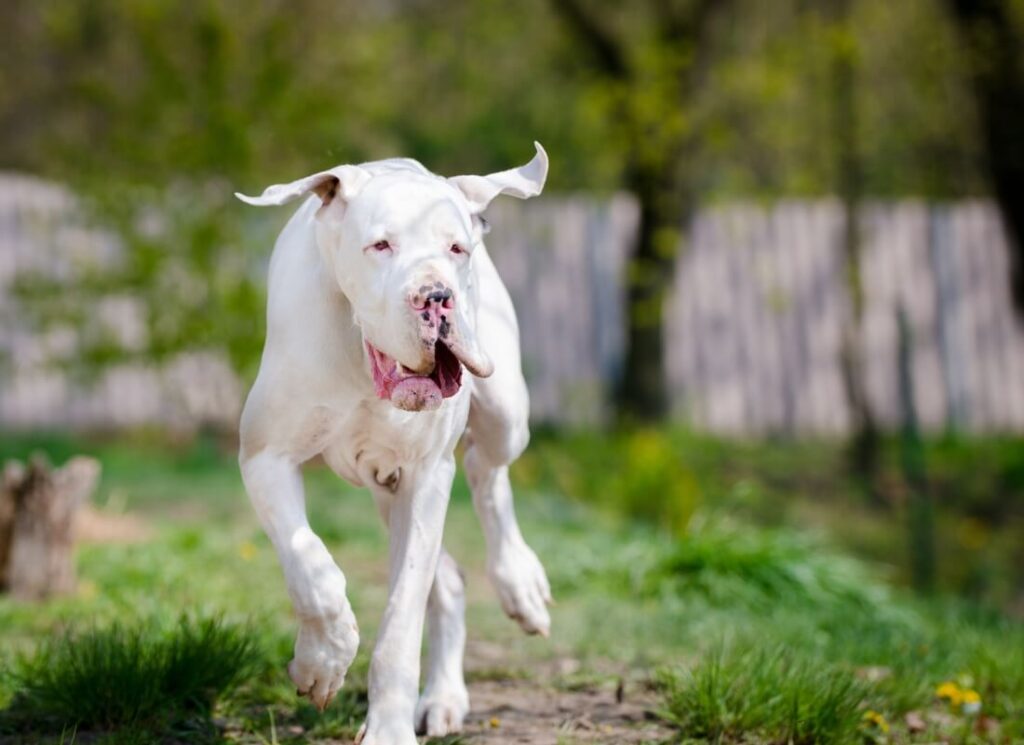
Calcium Levels & Great Dane Puppy Growth
The science of calcium and the calcium, phosphorus, vitamin D link to bone growth issues and poor bone modeling becomes more and more clear as research is done.
Here is a study that found puppies under 6 months of age were most susceptible to inconsistent calcium levels: https://pubmed.ncbi.nlm.nih.gov/12118666/
Here is another resource, a well-cited paper regarding nutrient levels and feeding large or giant breed puppies.
When we look at food brands that have qualified nutrition staff, who do feeding trials, and who do a lot of research, we see MUCH different analysis from their large and giant breed formulas than we see from most, if not all Victor formulas.
Science-backed companies have cutting-edge nutritional profiles and their formulas should be the baseline upon which other true large and giant breed puppy formulas are built.
When I’m choosing food for a Great Dane puppy, I want food that most closely matches the brands who have qualified nutritionists, do feeding trials, and publish actual research on this topic. (Or better yet, feed the brands backed by actual science and research).
Unfortunately, Victor foods does not meet any of these basic requirements and most (if not all) of their formulas end up missing the mark. Notice how the Victor formula is lower in protein, much higher in fat, and higher in calcium, too.
A note about protein: many people choose food for their Great Dane based off the protein level. This is an outdated practice with many studies showing that the protein level is not a factor in the development of growth disorders.
Too low of protein can actually be detrimental to proper growth, and may result in excessive intake of calcium.
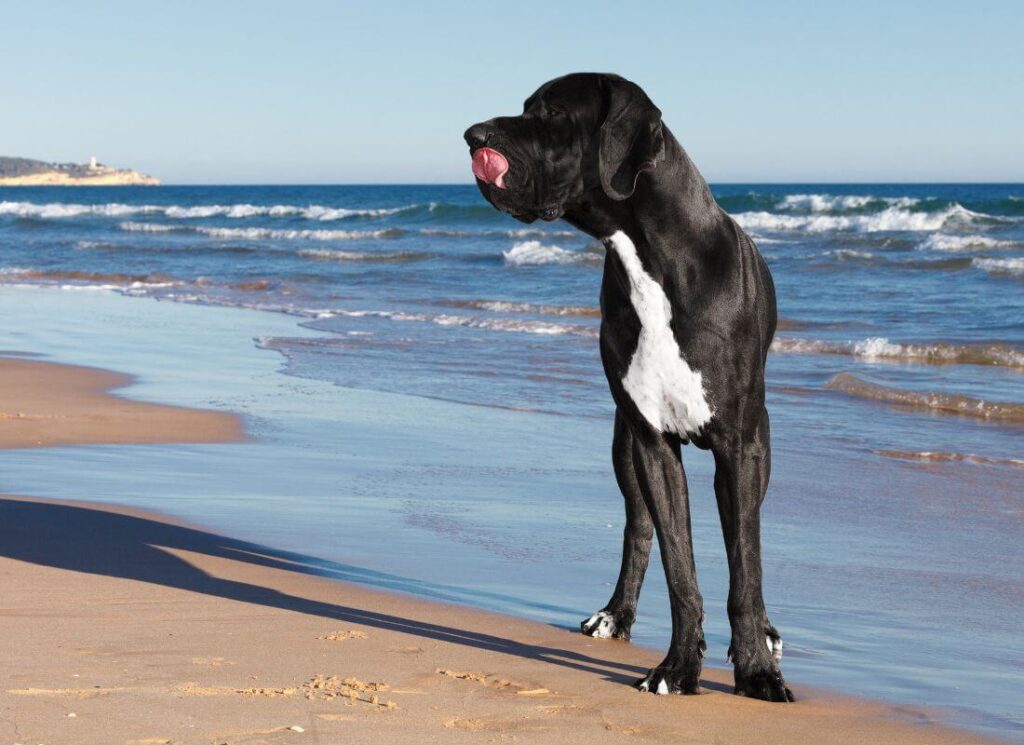
Do Great Danes Do Well on Victor Food?
Anecdotally, many people cite that their Great Dane does well on Victor foods. Fixing an issue with chronic loose stools seems to be a common positive comment that we see from Dane owners who switched to Victor.
Many Victor dog food formulas contain inulin (a prebiotic) and probiotics, so this isn’t a surprise.
Good stools happen on many other brands as well. While good gut health is super important, it’s not the only sign of good health, however.
Many dogs with shiny coats and perfect stools die in their sleep from unchecked heart disease that presented with very few symptoms. When evaluating the health of the dog, we’re not just looking for good stools.
Additionally, most Great Dane owners are unable to properly evaluate their dogs movement and structure. As a result may not see an issue with poor angulation, wonky movement, swollen knuckles, turned out limbs, or flat and splayed feet. These are all things where genetics, environment, and nutrition play a role.
For perspective, check out this young Great Dane. In the first image, she’s being fed Victor foods. Notice her feet after being switched to a more appropriate food. She no longer has swollen ankles, and her feet are providing a much better, stronger platform to support her weight.
This was a positive and notable change for multiple dogs in this same breeding program, not just the one in this photo. I know this dog personally and her feet improved in a matter of 2 weeks on the food switch.
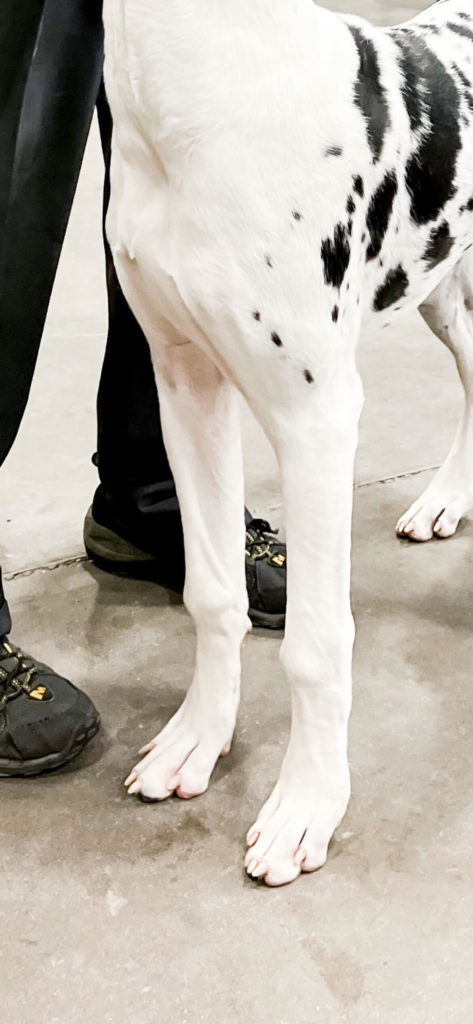
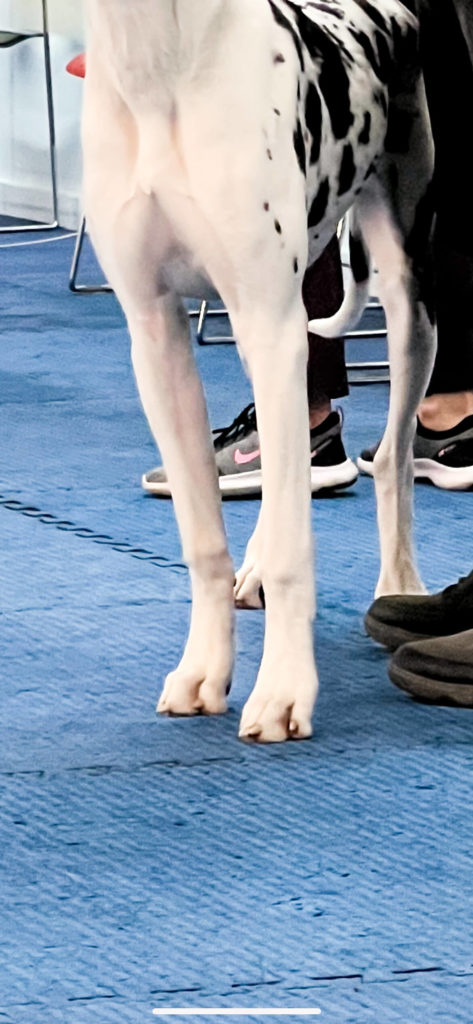
Does Victor Dog Food Cause Breeding Issues?
We prefer to rely on science rather than anecdotes, but we should note that MANY reproductive veterinarians advise clients to stay away from Victor foods and recommend using well-researched, specially designed formulas from Pro Plan and Royal Canin instead.
Anecdotally, there is a huge volume of reports from breeders whose dogs were struggling on Victor. Low birth weights, stillbirth, and small litter sizes are just some of the suspicious volume of noted complaints.
This problem could be related to certain ingredients, bioavailability, or the nutritional balance of protein, fat & carbs.
We will never know, however, because Victor does NOT do any research and does not perform any feeding trials.
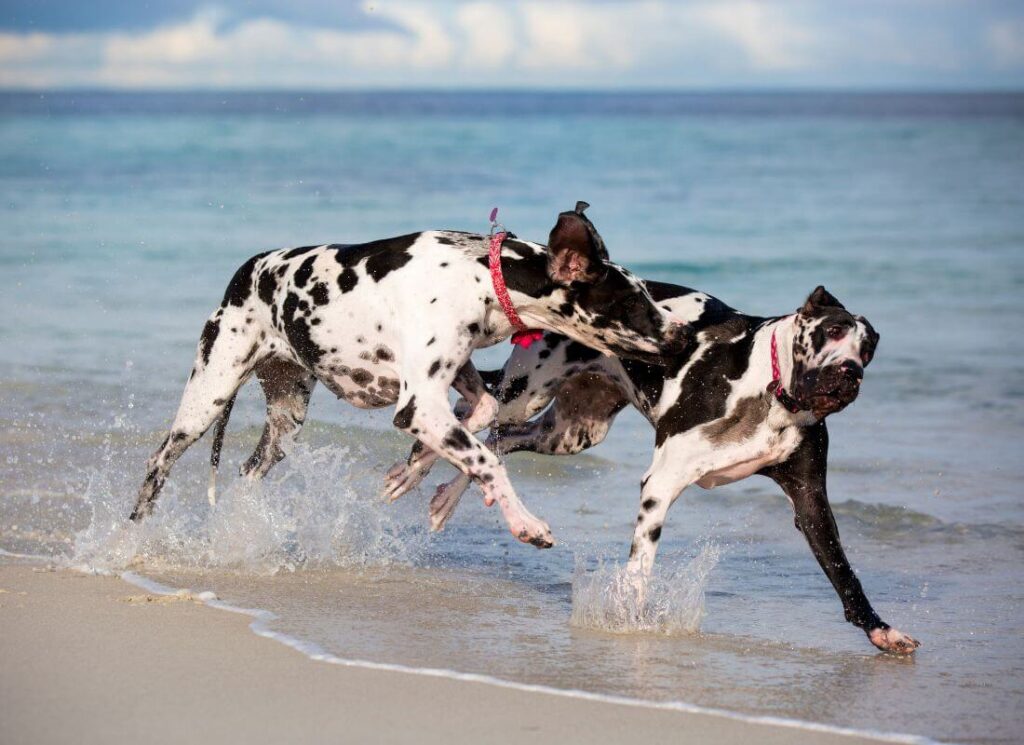
Does Victor Dog Food Cause DCM?
Many studies have shown, on repeat, that there are two main factors contributing to dogs developing heart disease (DCM) from dog food.
- An abundance of peas, potatoes, chickpeas, sweet potatoes, or similar legumes used in the first 10 ingredients.
- Foods that do not have a board certified Veterinary Nutritionist (DACVN) or PhD in Animal Nutrition on staff to formulate the foods (incorrect formulation).
It’s not about being ‘grain free’. There are confirmed cases of DCM on all kinds of foods, with or without grains.
There is a lot of misinformation about grain-free dog foods and DCM.
Think the FDA debunked the grain-free DCM food link? Think again.
We do not believe that all Victor dog foods will cause heart disease, but, we encourage all Dane owners to stay away from Grain Free foods of all types. Here is an ingredients list from Victor Grain-Free.
Notice how peas and sweet potato make up a huge portion of this diet. Peas in particular have been shown to be problematic when used in large amounts. For more information on nutritional DCM, READ HERE.
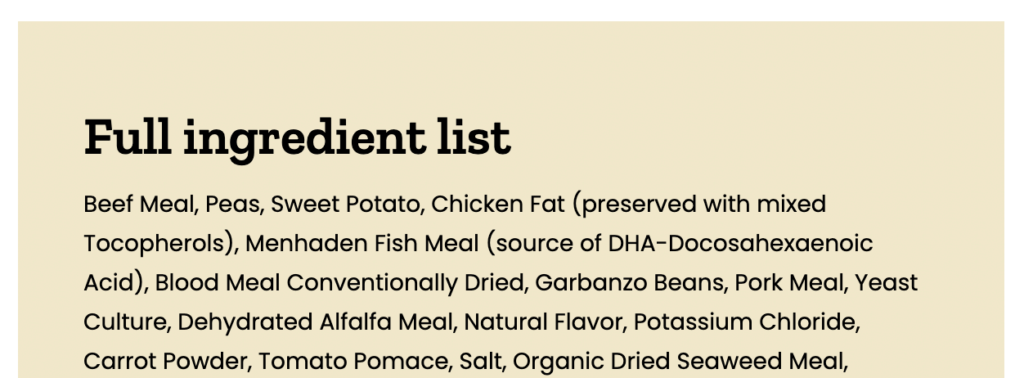
Does Hello Danes Recommend Victor Dog Food?
We do not.
The lack of qualified formulation staff and unbalanced calcium levels should give dog owners pause about considering this food for their Great Dane.
Of course, if it works for you and you love it, we’re not going to bash you for feeding it. We do however, want to make sure you are well-equipped with legitimate information.
If you wish to use Victor foods, keep in mind that the green bag, Elite Canine, is the only grain-inclusive formula by Victor that is actually balanced correctly for giant breed dogs. It does list peas in the first 4 ingredients, however, which is a risk factor for nutritional DCM. We do not recommend this food.

